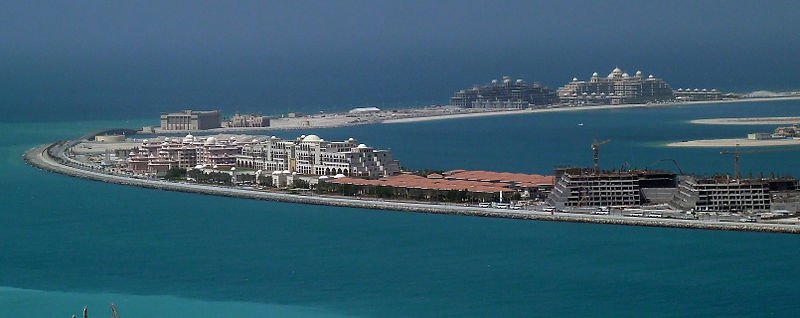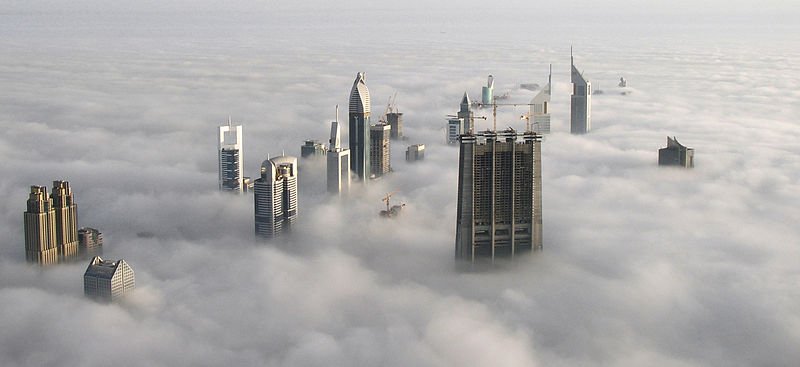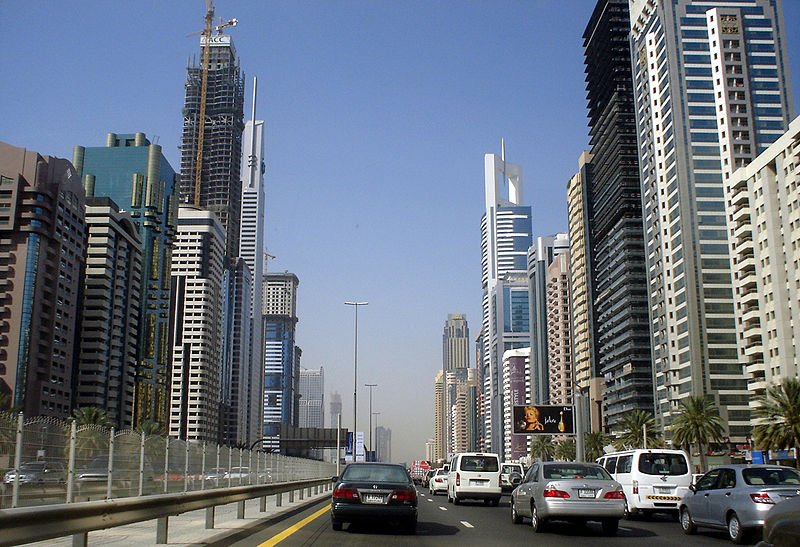 Palm Jumeirah, Dubai
Palm Jumeirah, DubaiSource: https://commons.wikimedia.org/wiki/File:Palm_Jumeirah_-_Crescent_Island_Detail_-_Dubai_-_10_March_2012.jpg
Author: Tab59

Author: Tab59

Dubai (Arabic: دبيّ) is a city and one of the seven emirates of the United Arab Emirates. It is the second largest as well as second most populous emirate in the country after Abu Dhabi. As with the rest of the major cities in the UAE, the city of Dubai is on the coast facing the Persian Gulf.
 View of Dubai skyline from Burj Khalifa
View of Dubai skyline from Burj KhalifaSource: https://commons.wikimedia.org/wiki/File:BurjSnowOld.jpg
Author: Captain

Author: Captain

The emirate of Dubai covers 4,114 sq km (1,588 sq mi). It has a population of 2.2 million people. The settlement dates back to AD 1095, although the earliest written mention of Dubai was in 1799. Dubai was formally founded in 1833. At the turn of the 20th century, Dubai thrived as a center of commerce and a port city for the Gulf coast.
The discovery of oil in the Gulf changed the fortune of Dubai. When the British departed, Dubai joined Abu Dhabi and four other emirates to form the United Arab Emirates, with Ras al Khaimah joining it the following year.
In the last two decades, Dubai has transformed itself into a global city. Although it derived its fortune from the oil industry, it has diversified its economy into real estate, financial services and tourism. The city has captured the world's attention with its penchant for constructing state-of-the-art skyscrapers, including Burg Khalifa, presently the tallest building in the world.
Burj Khalifa, Dubai on Google Maps Street View
Visiting Dubai
Dubai International Airport (DXB) is the 13th busiest airport in the world (passenger traffic in 2010) and 4th busiest airport in the world by international passenger traffic. It is the home base of Emirates and low-cost carrier Flydubai. The airport has three terminals. Terminal 1 is for most airlines, Terminal 2 is for low-cost carriers, while Terminal 3 is exclusively for Emirates. Arriving at either Terminals 1 or 3, you can take the Dubai Metro or bus to downtown Dubai. Downtown Dubai
Downtown DubaiSource: https://commons.wikimedia.org/wiki/File:DubaiSkyscrapers2.jpg
Author: H005
Looking for information on Penang? Use this Map of Roads in Penang to zoom in on information about Penang, brought to you road by road.

Author: H005
Sights & Attractions to visit in Dubai
- Al Mumzar Park
- Al Hamriyah Park
- Al Shindagha
- Aquaventure Theme Park
- Bait Al Wakeel Fishing and Maritime Museum
- Burj Khalifa
- Cinestar at the Mall of the Emirates
- Deira City Centre
- Deira Clocktower
- Dubai Festival City
- Dubai Gold and Diamond Park
- Dubai International Convention Centre
- Dubai Museum
- Fish Roundabout
- Grand Mosque
- Ibn Battuta Mall
- Jumeirah Beach
- Jumeirah Mosque
- Lamcy Plaza
- Mall of Arabia
- Mall of Emirates
- Mushrif Park
- New Dubai Zoo
- Raffles Botanical Garden
- The Dragon Mart
- The Dubai Mall
- Wild Wadi Water Park
 Latest updates on Penang Travel Tips
Latest updates on Penang Travel Tips
 Map of Roads in Penang
Map of Roads in Penang
Looking for information on Penang? Use this Map of Roads in Penang to zoom in on information about Penang, brought to you road by road.
Copyright © 2003-2025 Timothy Tye. All Rights Reserved.

 Go Back
Go Back